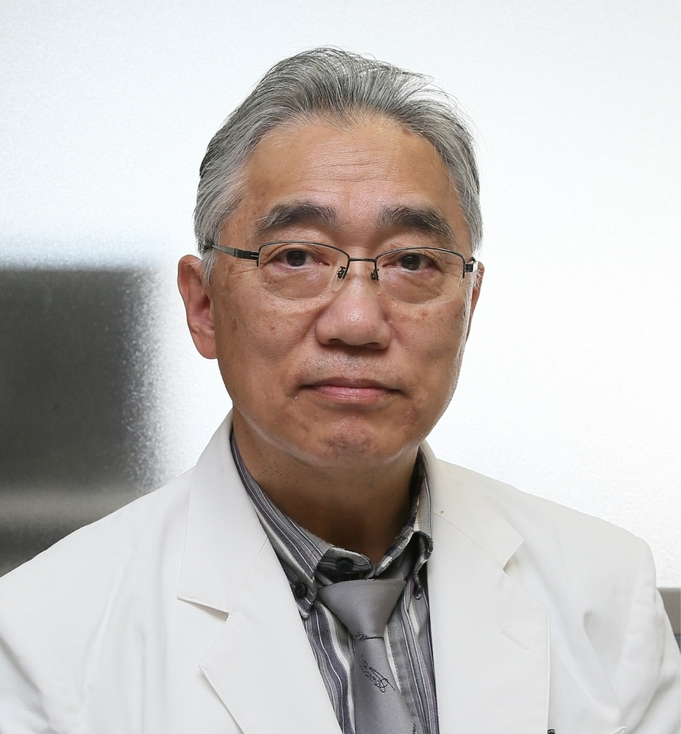"Utilizing Neuroscience and New Technologies in the Bobath Concept"
We have organized lectures by three distinguished professors and case presentations by IBITA members under the theme:
Kaoru Takakusaki, M.D., Ph.D. (Asahikawa Medical University)
Professor Takakusaki specializes in motor and postural control. His research focuses particularly on the mechanisms of postural control and motor learning. His insights have provided us with valuable knowledge that supports clinical reasoning and intervention planning.
Eiichi Naito, Ph.D. (Center for Information and Neural Networks)
Professor Naito conducts research aimed at understanding and enhancing human sensory and motor functions. His broad areas of investigation include body schema, neural representations of the body and self-awareness, motor imagery, motor adaptation, and sensory-motor integration. His lecture will focus on the “body schema,” a key concept within the Bobath approach.
Hiroshi Yamasaki, Ph.D. (Saitama Prefectural University)
Professor Yamasaki’s work centers on the qualitative analysis of human movement. He is particularly interested in improving motor performance and developing qualitative assessment methods in rehabilitation. His research is deeply rooted in practical clinical application.
The above provides an overview of each professor’s field of expertise and academic background. These lectures, delivered by experts with a wealth of experience and knowledge, will offer valuable learning opportunities for all participants. An outline of each lecture is provided below.
These lectures can be watched at your request, and join us as an extra audience.
Kaoru Takakusaki, M.D., Ph.D, Asahikawa Medical University

Postural Control
This lecture considers neuronal mechanisms of postural control. Clinical studies have shown that posture-gait disturbance is attributed to the dysfunction of the whole neuraxis and the musculoskeletal system. The cerebral cortex, basal ganglia, cerebellum, brainstem, and spinal cord temporally and spatially integrate and coordinate multisensory feedback and efferent copies of the motor command. Therefore, the extensive repertoire of voluntary movements can be coupled with anticipatory and reactive postural adjustments to provide the framework for supporting and stabilizing the goal-directed gait activity. Redundancies in the system allow adaptation and compensation through reward-oriented and error-based learning processes implemented through the BG and cerebellar pathways, respectively. However, the impairment of these systems may compromise the capacity to adapt and lead to maladaptive changes, impairing posture-gait control. When these impairments occur, the risk of falls can significantly increase, and interventions are required to reduce morbidity.
This lecture will outline 1) the fundamental postural control systems in the brainstem and spinal cord, 2) the roles of the neurotransmitters that regulate their activity, and 3) the higher function of postural control by the cerebral cortex, basal ganglia, and cerebellum. Finally, the pathophysiology of posture-gait disorders in Parkinson's disease is discussed based on the above mechanisms.
Eiichi Naito, Ph.D., Center for Information and Neural Networks

Body Schema
Proprioception not only plays a pivotal role in human motor control and motor learning, but is also the basis of bodily self-awareness through perception of body schema. This talk introduces kinesthetic illusion induced by vibratory stimulation of tendons of the limbs, and explains the basic neural substrates by which kinesthetic signals from muscle spindles are processed in the motor network centering on the primary motor cortex, and then brought to consciousness through activation of the right inferior parieto-frontal network. Furthermore, this talk will also introduce and discuss clinically relevant following findings; (1) the neural circuit formed by the muscles and the motor cortex, which is the neural basis of kinesthetic illusion, can be a neural circuit in which vibratory stimulation of hand muscles can reduce spasticity and contracture of the paretic hand, (2) the first-person sensory experience during the illusion that “my hand is moving” can promote motor function recovery after stroke, finally, (3) the effectiveness of a motor function restoration method using bilateral proprioceptive-motor coupling, which utilizes the integrative function of motor intention and kinesthetic signal in the motor cortex and the right inferior parietal lobe.
Reference
Kimura N, Sato M, Kobayashi Y and Naito E. Augmented activity of the forearm extensor muscles induced by vibratory stimulation of the palm of the hand in individuals with subacute post-stroke hemiplegia. Brain Injury 36(6),782791, 2022. Doi: http://dx.doi.org/10.1080/02699052.2022.2048694,
Nakano H, Nakagawa K, Ikuno T, Nagashima M, and Naito E. Vibratory stimulation and not action observation or mirror therapy reduces paralyzed hand spasticity in chronic stroke survivors. medRxiv. doi: https://doi.org/10.1101/2024.12.03.24318436.
Yukawa Y, Higashi T, Minakuchi M, Naito E, and Murata T. Vibration-induced illusory movement task can induce functional recovery in patients with subacute stroke. Cureus, 16(8):e66667, 2024. doi: 10.7759/cureus.66667
Nakano H, Tang Y, Morita T, and Naito E. Theoretical proposal for restoration of hand motor function based on plasticity of motor-cortical interhemispheric interaction and its developmental rule. Frontiers in Neurology 15, 1408324; 2024. doi: https://doi.org/10.3389/fneur.2024.1408324,
Naito E, Morita T, Hirose S, Kimura N, Okamoto H, Kamimukai C and Asada M. Bimanual digit training improves right hand dexterity in older adults by reactivating declined ipsilateral motor-cortical inhibition. Scientific Reports 11, Article number: 22696, 2021.
Miura G, Morita T, Park J, and Naito E. Younger adult brain utilizes interhemispheric strategy of recruiting ipsilateral dorsal premotor cortex for complex finger movement, but not aging brain. Frontiers in Aging Neuroscience (in revision). bioRxiv doi: https://doi.org/10.1101/2024.05.26.595953
Hiroshi Yamasaki, Ph.D., Saitama Prefectural University

Qualitative Movement Analysis: A New Perspective for Rehabilitation Professionals
Movement analysis plays a central role in rehabilitation, enabling professionals to understand patients’ motor function—particularly the adaptive strategies underlying motion generation. Contemporary clinical assessments largely rely on numerical scores to evaluate motor performance. However, such metrics often fail to capture the connectivity, fluidity, and organization of movement components.
Qualitative Movement Analysis (QMA) provides an alternative perspective by focusing on the structural and relational aspects of movement, rather than isolated functions of individual body parts. This approach enables us to understand and uncover subtle changes in movement patterns that may indicate individual responses to therapeutic interventions, offering insights not readily visible through conventional scoring methods.
This lecture introduces QMA as a framework for analyzing movement quality and refining therapeutic targets. Key topics include:
• Body Members Concept – conceptualizing movement as a structured, functional system
• Optimization Principles – using movement quality as a dynamic metric for recovery monitoring
A markerless motion capture-based, site-ready analysis method will be demonstrated to show how QMA can be applied in real-world rehabilitation settings. The lecture aims to provide clinicians with new linguistic and conceptual tools to describe, interpret, and guide meaningful changes in motor behavior.
Reference
Hiroshi R. Yamasaki et al. Evaluating the impact of therapeutic handling on sit-to-stand movements post-stroke: Kinematic smoothness as a monitoring metric for recovery. Journal of Bodywork and Movement Therapies, 42, June 2025, 620-628 https://doi.org/10.1016/j.jbmt.2025.01.040
Video on Demand
You can watch these lectures at your request. The lecture video will be available as a VOD for everybody.
How to watch
You can watch these lectures on your request between September 1st to 30th, 2025 on your device.
Registration and Payment
You register and pay with a credit card for VOD up until the end of August 2025
Watch it!
We will send the link for VOD on September 1st, 2025 to your email which you filled in when you registered.
Extra audience at the venue
This lecture is open to IBITA members as well as general participants at the venue. The participation fee includes the auditing fee and lunch.
Shopping Cart for payment
You can purchase it from the cart.